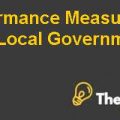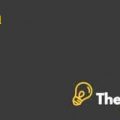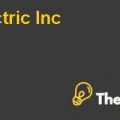
Optimal Portfolio Analysis
In the stock market, investors are attracted to invest in different portfolio because of higher returns and volatility of stocks. The relationship between returns and risk is direct. Following relations between risk and return determine the investor’s natures and these relationships between risk and returns are as follows:
High Risk High Return:
It means that investors, those who prefer to get higher returns from their investment invest in stocks with high risk.
Low Risk Low Returns:
This relation is for those investors who prefer lower returns and for that they got lower risks in their investments.
Optimal Portfolio Analysis:
From the given data, the analysis done on the basis of a riskier nature of the investment whether the investor is leveled with the higher risk or investor is leveled with lower returns. To create the Static Stock Portfolio, firms need the historical data for designing a portfolio.
Fama-French Model:
The Fama-French Model is a three factor model in which stock returns are defined on the basis of market capitalization and market ratio. The Fama-French Model defined under the following formula:
In this formula the representative component are described below:
Below is the CAPM Formula included in the Fama-French Model
R= Return
Rf= Risk Free Return
β=Stock Beta
Km=Market Return
These above defined component are the Capital Asset Pricing Model:
βs=Beta of Small and Big market capitalization
SMB=Subtracted value from Small and Big Market Capitalization
βv=Beta of book to market ratio
HML=Subtracted value of High and Low Book to Market Ratio.
Interpretation of optimal portfolio’s Components:
The optimal portfolio will be made between the two categories:
The Exhibit 1 is given below for the Optimal Stock Portfolio:
a) Expected Return:
The best optimal stock portfolio in respect with the expected return is given below in appendix section under the Exhibit 1. In this, the portfolio only consists with higher returns in the market portfolio. Higher returns represent higher risks involved in it. The involved risk is market risk and named as a systematic risk.
b) Estimated Volatility:
The estimated volatility explains that in each of the stock in optimal stock portfolio variations exists between returns and risk.
c) Co-efficient of Variation:
The co-efficient of variation in this optimal stock portfolio describes that; the standard deviation is varied from the return in given range. Please refer to the exhibit 1 for ranges under column Co-efficient of Variation.
d) Company Beta:
The Company beta represents that how more risk is involved in the company’s stock value and return, in addition it also mentions the systematic risk a firm has. From company’s beta, an investor can analyze that the company’s stock price is more volatile than the market price.
e) SMB Beta:
The SMB represents small and big market capitalization differences. The SMB defines that how much small or big a company is in size. The market capitalization also tells the per share value of the company over its total sales or total assets.
f) HML Beta:
The HML describes that companies with high book-to-market ratios (value stocks) surpass growth stocks. HML also tells you that returns from portfolio are attributed only to the value stock (market capitalization).
Regression Analysis:
In regression analysis, the first step is to calculate the estimated required return. The estimated return can be obtained from calculating the Risk Free Return + (Market Risk Premium * Company Beta) + (Average of SMB * SMB Beta) + (Average of HML * HML Beta) + Alpha. Estimated volatility comes out from the calculation of standard deviation and it is the average of the standard deviation. The next part of the regression analysis is the co-efficient................................
This is just a sample partial case solution. Please place the order on the website to order your own originally done case solution.












